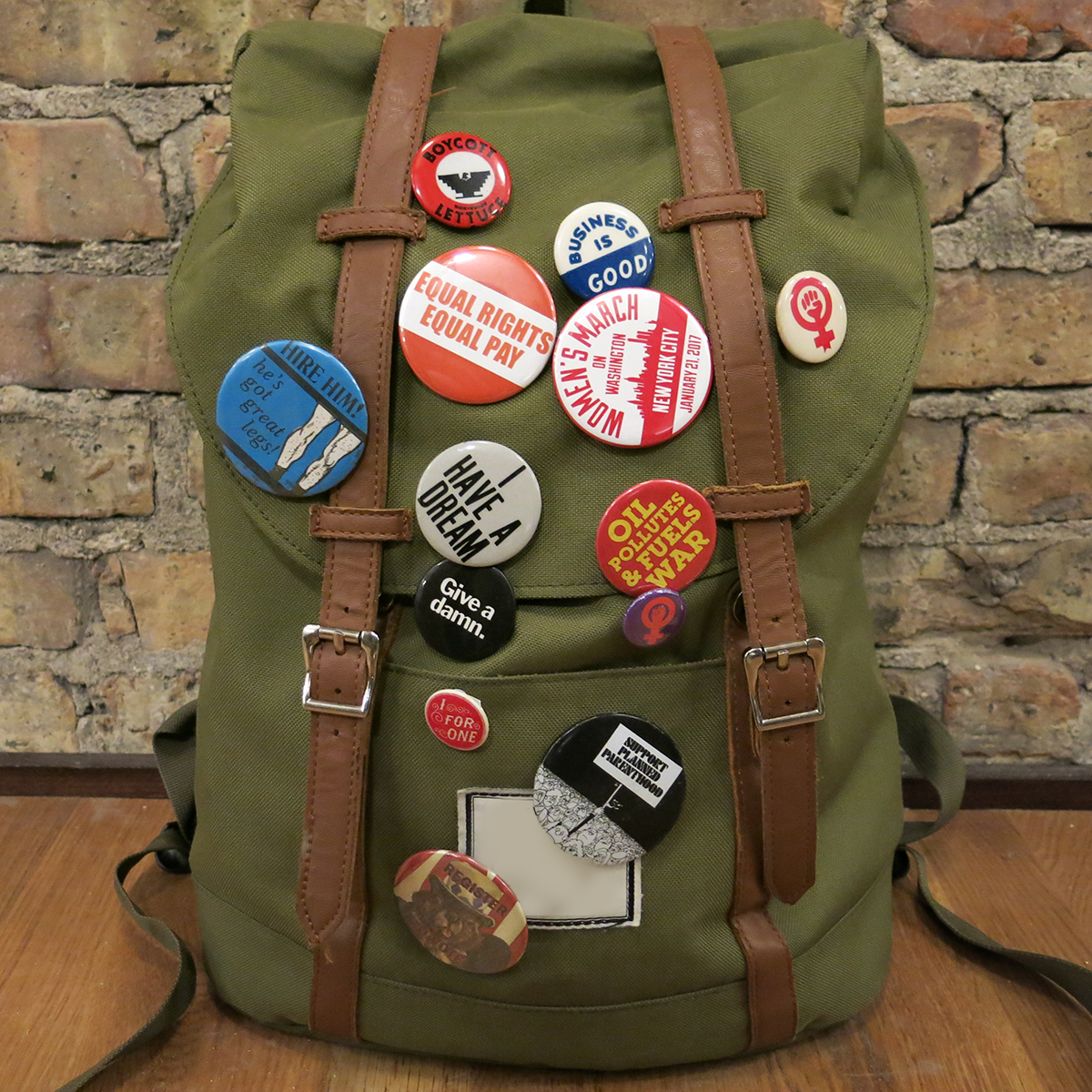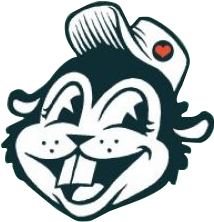Along with campaign buttons, the badge pinned to a lapel in promotion of a cause is among the most iconic of all button types. Social justice buttons have been popular since the pin-back button was first invented at the turn of the century, and are increasingly popular today. (Maybe you're even wearing one on your lapel right now!) In the Busy Beaver Button Museum’s collection, activist buttons championing various positions have been combined into the cause button category. Here’s our brief history of American cause buttons:

1910's
Thanks to the increased mobility of the automobile age, citizens across the United States began to enjoy an increased ability to connect and to assemble. Americans used this new freedom to assemble behind the causes in which they believed. Around the turn of the century, tiny button pins were used to rally support for causes like raising funds for World War I, safe roads to travel on, and voting rights for women.
1920's
It's hard to believe that less than 100 years ago the U.S. congress ratified the 18th amendment, which prohibited the manufacturing and sale of alcohol because many people suffer from addiction. Prohibition was meant to increase American health and help align the country's efforts to reduce crime, solve social problems, reduce the tax burden created by prisons and poorhouses. (Cato Institute). The political activist buttons that were made during this time advocated both sides of this issue.
1930's
Pro-business campaign pins were pressed after the Stock Market crash in 1929. The public was saving instead of spending, which greatly effected the purchasing and production of goods.
1940's
"Halt Hitler" custom-made buttons—in reference to the anti-Nazi movement against Adolf Hitler during the second World War—were popular during the 1940s. Due to wartime metal rationing, however, WWII-era metal buttons are hard to come by.
1950's
In the middle of the century, scientists began to confirm that Earth’s climate was changing. In fact, experts even changed their language to identify this increasing problem. Instead of "bad weather", we were beginning to call severe weather occurrences "climate disruption," or "climate change." This button is thought to be one of the first times that the term pollution was used to reference the environment.
1960's
While U.S. soldiers were in the midst of a war on Vietnamese soil, U.S. citizens were engaging in their own domestic war of protests. In the 60s and 70s, the pinback button found use as Vietnam war protest buttons and peace pins. These buttons were vital to the visual identity of movements to end the Vietnam War, gain equal rights for all citizens, champion labor unions, and support presidential candidates.
1970's
While the fight for equal rights continues, the 1970's focused on the issue of women's rights in the workplace. This particular button,"Hire Him, He's Got Great Legs", was a 1973 ad slogan highlighting women’s unequal rights in the workplace. It became part of a 1970s advertising campaign by Legal Momentum: the oldest non-profit legal organization dedicated to advancing the rights of women and girls through law and public policy.
1980's-1990's
In the 80s and 90s, buttons became a popular tool in public health advocacy. The public health program D.A.R.E. (Drug Abuse Resistance Education) which formed in 1983, used buttons to warn of the dangers of smoking and drug use.
In 1981, HIV and AIDS was finally accepted as the worldwide epidemic it had become. Many buttons of the era championed the fight against the infection and its disease, and defended those who had fallen victim.
2000's
In the aftermath of the terrorist attacks of September 11, 2001, and President George W. Bush’s declaration of “War on Terror,” the United States entered an era of extreme polarization. The open-ended military campaign was not met with complete nationwide support. As a result, anti-war and anti-Bush buttons became a popular form of visual protest.
Today
Though American society has enjoyed steady progress in the past hundred years, many historically championed causes are still being fought for today. The past decade has also seen a groundswell of new causes and newly amplified voices that have utilized the power of the button. The Black Lives Matter movement’s powerful message graces many a jacket and backpack. Organizations like Planned Parenthood have gained increasing recognition as important and valuable organizations for women's health.
America has hosted one of the most volatile political campaign seasons in recent history. This year alone, hundreds of millions of campaign buttons and political buttons, either promoting or dismissing candidates, were produced.
Now more than ever before, people all across the country (and the world!) are using buttons as a way to show their disdain and their support. Though contemporary Americans have more platforms on which to be vocal, it’s clear that buttons have remained a vital and relevant form of self-expression.
—
Our infographic on the history of cause buttons over the past century—

---
Inspired by these historical political buttons? Create your own campaign buttons.


